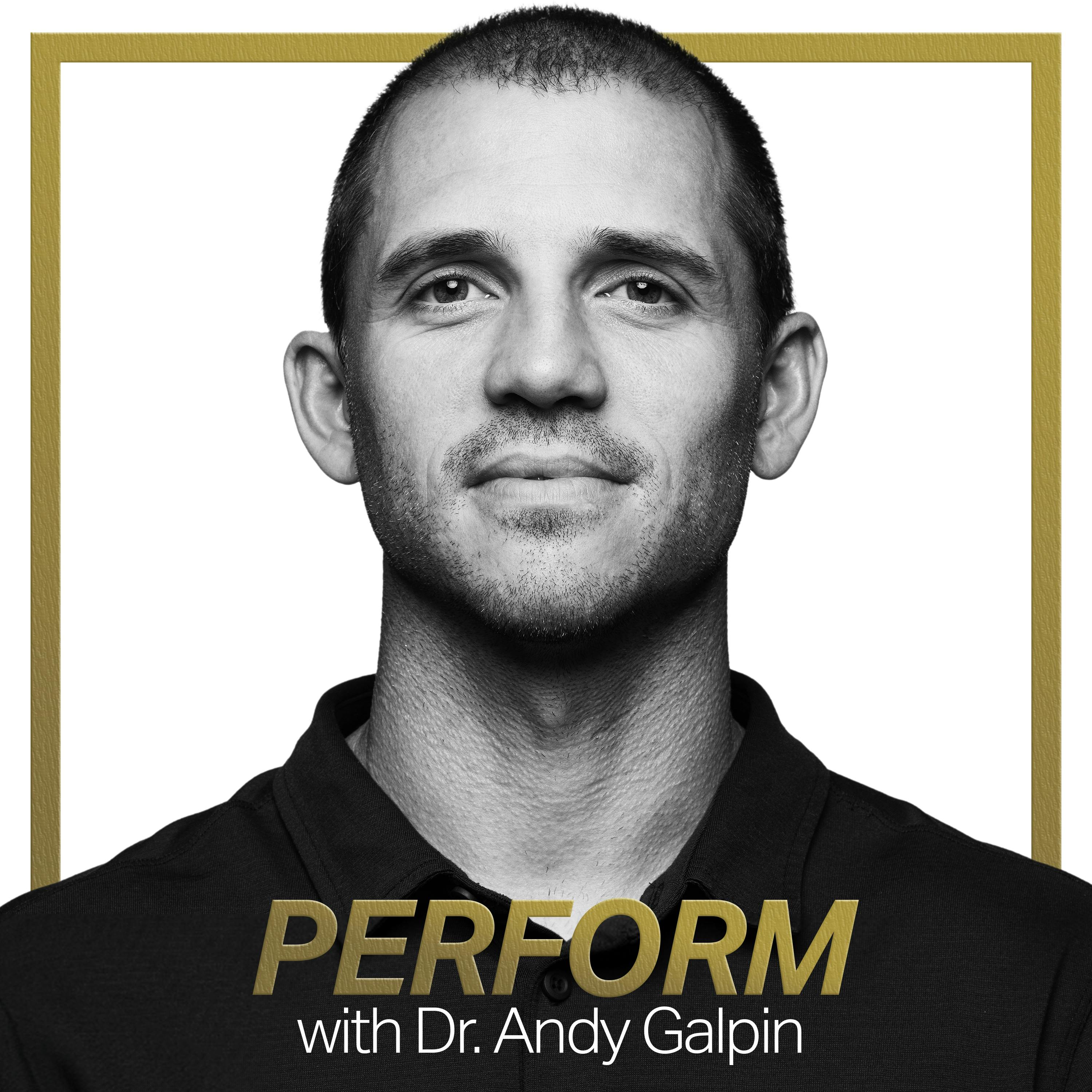
June 26, 2024 • 1hr 22min
How to Improve Your VO2 Max & Build Endurance
Perform with Dr. Andy Galpin

Key Takeaways
- VO2 max is one of the most significant predictors of all-cause mortality, even more important than traditional markers like blood pressure and cholesterol levels
- There is no upper limit to the benefits of improving VO2 max - the higher your VO2 max, the better for longevity and health
- Improving VO2 max requires training both the central (cardiovascular) and peripheral (muscular) systems
- A comprehensive VO2 max training program should include a mix of low, moderate, and high intensity work
- The "Metamorphosis" 8-week VO2 max program gradually builds intensity and volume over time, starting conservatively
- The "Faster in 50" marathon training program focuses on building endurance and race-specific preparation over 50 days
- Key components of endurance training include:
- Proper warm-ups and cool-downs
- Building tissue tolerance gradually
- Balancing intensity and volume
- Incorporating strength training
- Practicing race-specific pacing and fueling
- Monitoring overall training load and recovery is crucial to avoid injury and optimize adaptations
- Programs can and should be modified based on individual needs, goals and starting fitness levels
Introduction
In this episode, Dr. Andy Galpin provides a detailed overview of practical applications for improving VO2 max and endurance, with a focus on two specific training programs - an 8-week VO2 max protocol and a 50-day marathon training plan. He explains the importance of VO2 max for health and longevity, outlines key training principles, and walks through the structure and progression of both programs in detail.
Topics Discussed
Importance of VO2 Max (00:06:28)
Dr. Galpin begins by emphasizing the critical importance of VO2 max for overall health and longevity:
- VO2 max is one of the most significant predictors of all-cause mortality
- It can be 2-4 times more predictive of survival than traditional markers like blood pressure and cholesterol
- There is no upper limit - higher VO2 max continues to correlate with better health outcomes
- VO2 max is modifiable through training, making it a key target for improving health
He states: "If you want to live longer and better, VO2 max should be one of your top priorities."
VO2 Max Training Principles (00:10:43)
Dr. Galpin outlines key principles for effective VO2 max training:
- Central vs. peripheral adaptations: Training must target both the cardiovascular system and muscular endurance
- Intensity zones: Programs should include a mix of low, moderate, and high intensity work
- Specificity: Training in the specific modality you want to improve (e.g. running) leads to better adaptations
- Progressive overload: Gradually increase volume and intensity over time
- Recovery: Allow adequate rest between high intensity sessions
- Individual factors: Programs should be tailored based on starting fitness, goals, and injury history
Metamorphosis VO2 Max Program (00:19:18)
Dr. Galpin provides a detailed overview of the 8-week "Metamorphosis" VO2 max program developed by Joel Jameson:
- Structure: 5 days per week for first 4 weeks, 6 days per week for last 4 weeks
- Intensity progression: Starts with easy and moderate days, adds high intensity work in week 5
- Key workouts:
- Steady state cardio
- Tempo intervals
- Fartlek training
- Power intervals (5-10 sec max effort)
- Strength component: 2-3 days per week of resistance training
- Warm-ups: Includes "aerobic plyometrics" to build tissue tolerance
Dr. Galpin emphasizes the conservative progression, stating: "Keep our eye on the prize of total volume. You don't want to add more than about 10% volume or intensity per week."
Faster in 50 Marathon Program (00:56:47)
Dr. Galpin then details the "Faster in 50" marathon training program developed by Mark Bell and Dan Garner:
- Structure: Two 25-day phases - general conditioning and marathon-specific training
- Key workouts:
- Interval runs
- Tempo runs
- Fartlek runs
- Long slow distance runs
- Strength component: 2-3 total body lifting sessions per week
- Progression: Gradually increases long run distance up to 24 miles
- Taper: Reduces volume in final week before race
Dr. Galpin notes this program can be modified based on starting fitness, stating: "If you're literally starting from nothing, you may want to take this first phase, which for Mark was only 25 days, and that itself might need to be 50 days or 60 days or even 150 days for you before you're ready to move on to the second phase."
Training Program Components (01:04:36)
Dr. Galpin highlights key components that both programs incorporate:
- Proper warm-ups: Include dynamic movements and "aerobic plyometrics"
- Gradual progression: Slowly increase volume and intensity over time
- Variety of intensities: Mix of easy, moderate, and hard efforts
- Strength training: 2-3 sessions per week to maintain muscle and prevent injury
- Recovery: Scheduled easy days and techniques like massage, breathwork
- Race-specific preparation: Practice pacing, fueling, gear in training
Monitoring Training Load (01:15:21)
Dr. Galpin emphasizes the importance of managing overall training stress:
- Consider cumulative fatigue over days and weeks, not just individual workouts
- Be conservative with progression, especially early on
- Monitor for signs of overtraining or injury risk
- Adjust volume and intensity based on individual response
He states: "Another major mistake that we've seen in the athletes we've worked with, as well as younger coaches that I've mentored, is really not appreciating what's going to happen over the course of the week and then over the course of those weeks, stacking up."
Conclusion
Dr. Galpin concludes by emphasizing that while he provided two specific program examples, the key principles can be applied to design effective VO2 max and endurance training programs for a variety of goals and fitness levels. He encourages listeners to focus on gradual progression, balancing intensity and volume, incorporating strength work, and allowing for adequate recovery. By following these guidelines and consistently putting in the work, significant improvements in VO2 max and endurance performance are achievable for most individuals.



